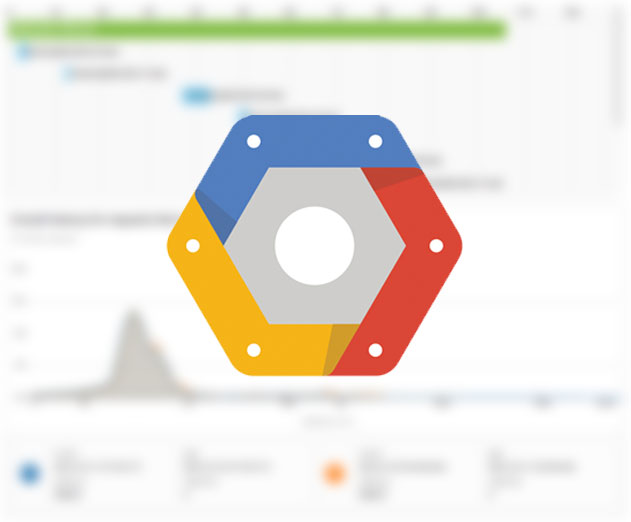Google Announces Beta Release of Google Cloud Trace and Monitoring
Saturday, January 24, 2015

|
Stuart Parkerson |
Last year Google announced Google Cloud Trace and Google Cloud Monitoring (through the acquisition and integration of Stackdriver) and now has released both in beta to anyone using the Google Cloud Platform.
Google Cloud Trace
Google Cloud Trace allows developers to diagnose performance issues in a production application by finding the traces for slow requests and viewing a detailed report of where time is spent in an application while processing these requests. Its trace analysis feature allows the ability to see the latency distribution for an application and the slow requests that may be affecting users. Developers can also use the trace analysis feature to check if the performance of a new release is better than the previous release.
Cloud Trace can analyze a set of requests to show their latency distribution, percentile latency values with sample traces, and the remote procedure calls that are significant latency bottlenecks. Cloud Trace also provides the ability to compare the latency profiles for an application’s requests from before and after a change is made such as rolling out a patch.
Cloud Trace has very little overhead, so developers can safely leave traces enabled for an application without worrying about performance impact. Once traces are enabled for an application, Cloud Trace will start tracing requests received by the application, and continue to do so as new versions of an application are deployed.
Google Cloud Monitoring
Google Cloud Platform customers can now use Cloud Monitoring to gain insight into the performance, capacity and uptime of Google App Engine, Google Compute Engine, Cloud Pub/Sub, and Cloud SQL. Cloud Monitoring streamlines operations by unifying infrastructure monitoring, system/OS monitoring, service/uptime monitoring, charting and alerting into a simple and powerful hosted service.
Cloud Monitoring provides insights into:
- Overall Health: Use resource groups to create aggregate views of key environments and systems. Incorporate application or business statistics using custom metrics. Create and share custom dashboards to provide teams with a unified perspective.
- Usage: Get core metrics and dashboards to understand capacity and utilization of Google Cloud Platform services.
- Uptime: Configure endpoint checks to test functionality and notify team members when web servers, APIs, and other Internet-facing resources become unavailable for end users.
- Performance: View latency, error rates and other key metrics for Google Cloud Platform services, and common web/application serving, database, messaging and load balancing platforms. Configure alerting policies to be notified when metrics are outside of acceptable ranges.
- Incidents: Receive notifications via multiple communication channels when alerting policies are violated.
The Cloud Monitoring Console provides a high-level overview of the health and key metrics for an environment which include:
- Cloud Monitoring Console: Configure alerts to notify a team when specified conditions are met, such as when the request latency for an App Engine module exceeds a certain threshold. These alerts can be configured to notify via email, SMS, PagerDuty, Campfire, Slack, HipChat and webhook.
- Alerting Configuration for Response Latency: Configure endpoint checks to provide notifications when web servers, APIs and other Internet-facing resources are unavailable for end users.
- Endpoint Check Status: Cloud Monitoring features native integration with common open source services such as MySQL, Nginx, Apache, MongoDB, RabbitMQ and more.
- Cassandra Performance Dashboard: Provides the opportunity to tailor Cloud Monitoring to suit specific needs. Developers can publish custom metrics to Google Clouds API and bring them together with system and infrastructure metrics on custom dashboards.
- Custom Metrics on Custom Dashboard: Google is working to integrate the rest of the Stackdriver technology into Cloud Monitoring with the goal of providing a unified monitoring solution for Google Cloud Platform, Amazon Web Services and hybrid customers and Google will continue to extend its support for each of these platforms. They are also working to integrate Cloud Monitoring and Cloud Logging more deeply to simplify root cause analysis for issues.
Read more: https://cloud.google.com/

Become a subscriber of App Developer Magazine for just $5.99 a month and take advantage of all these perks.
MEMBERS GET ACCESS TO
- - Exclusive content from leaders in the industry
- - Q&A articles from industry leaders
- - Tips and tricks from the most successful developers weekly
- - Monthly issues, including all 90+ back-issues since 2012
- - Event discounts and early-bird signups
- - Gain insight from top achievers in the app store
- - Learn what tools to use, what SDK's to use, and more
Subscribe here




_cptybzmh.jpg)








